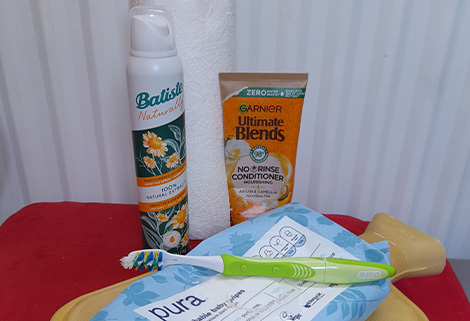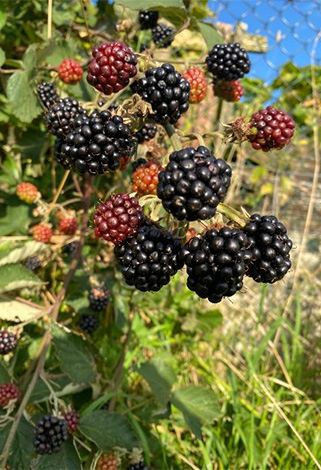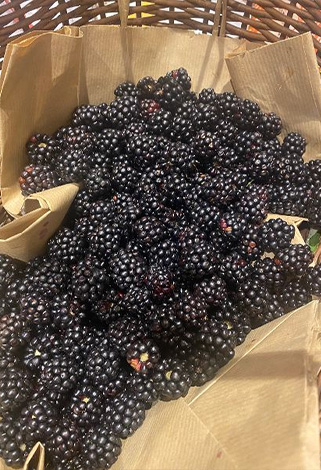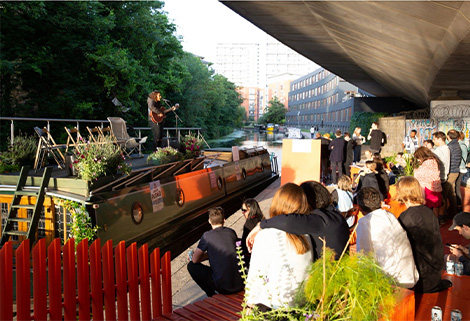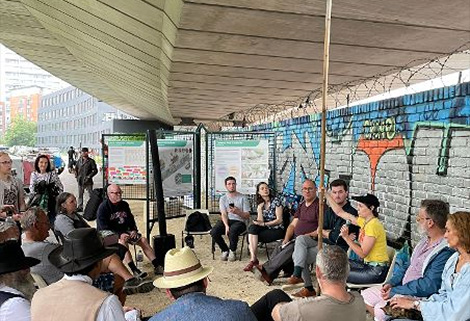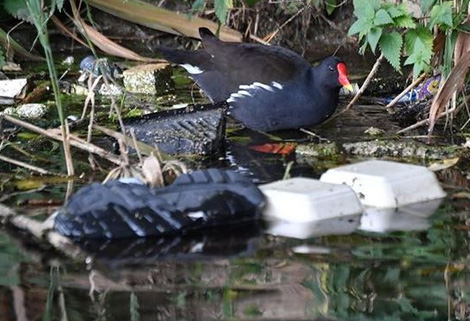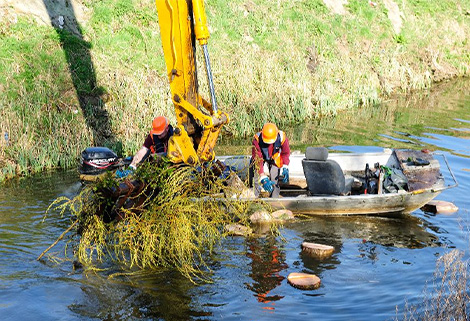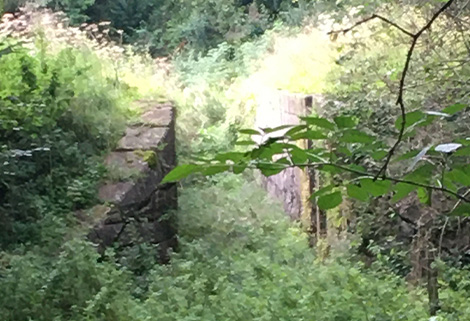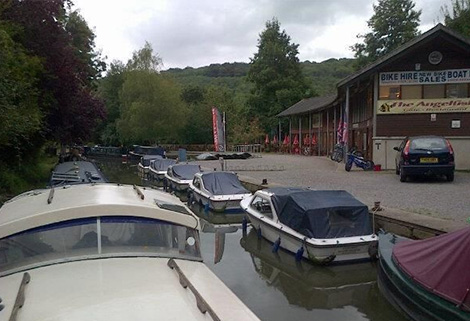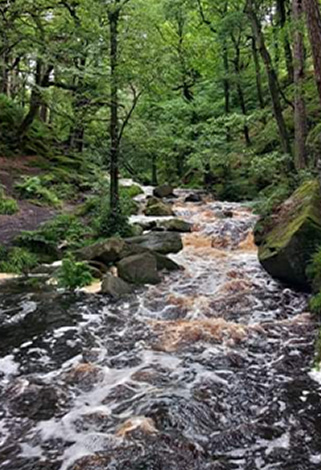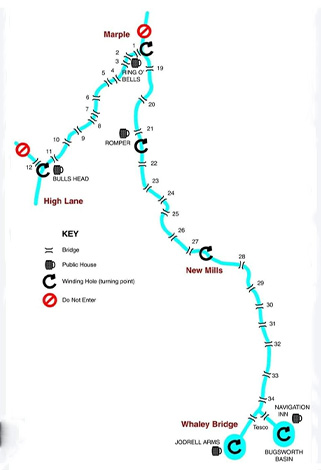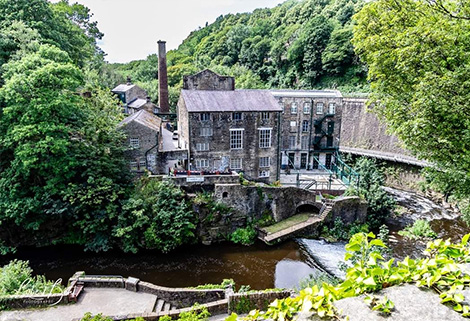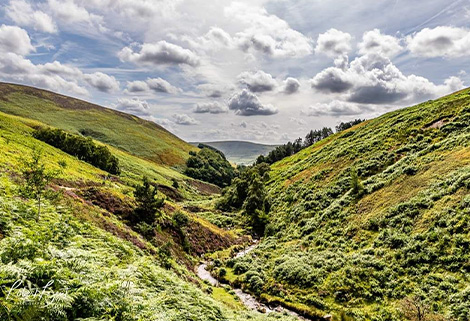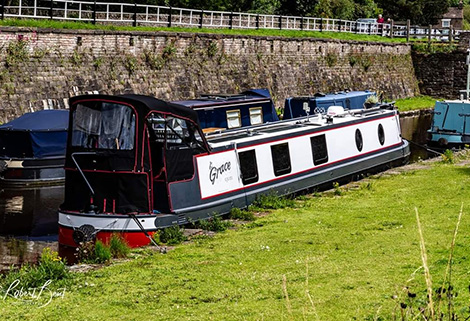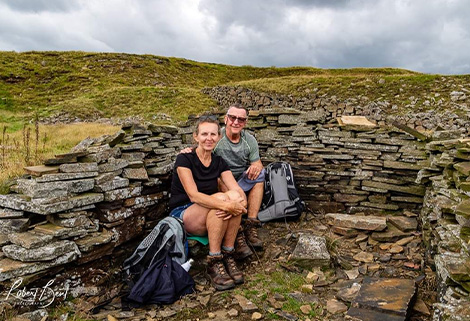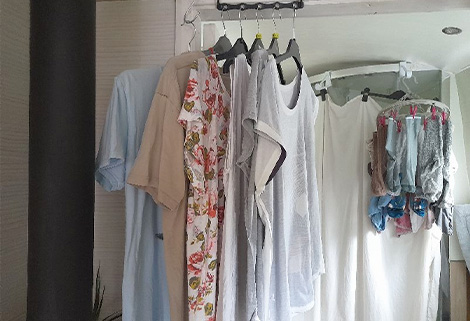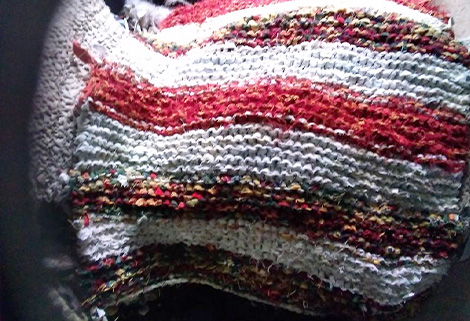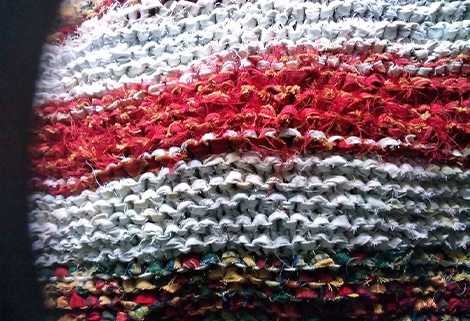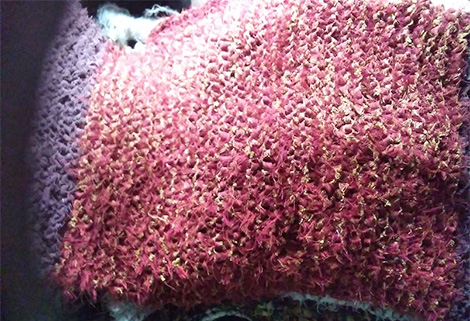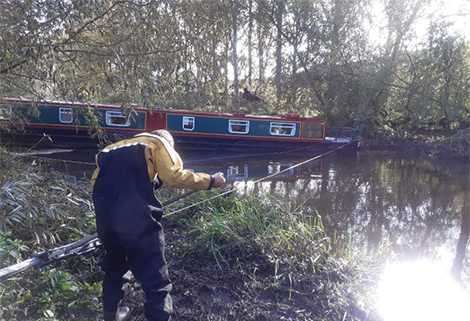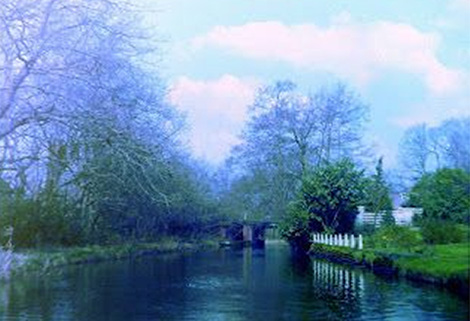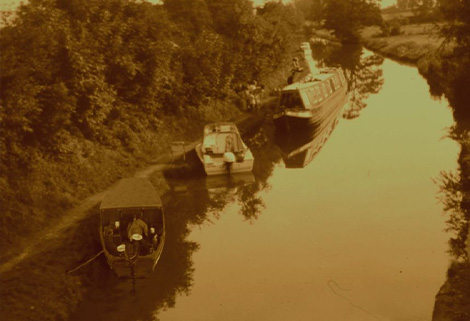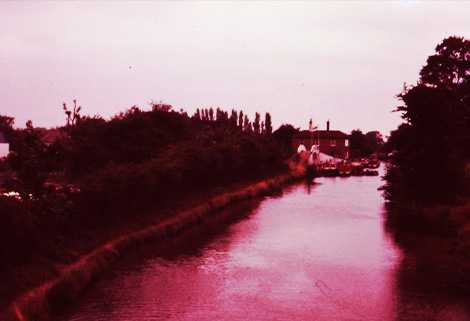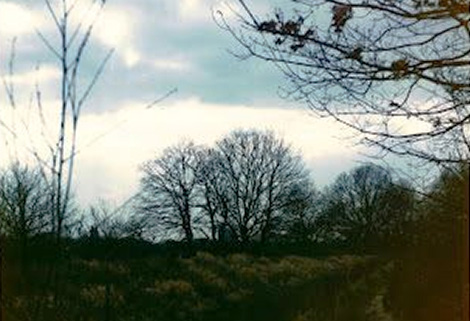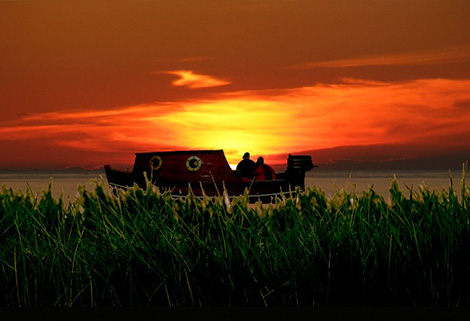BERRY AND APPLE YORKSHIRE PUDDINGS
A Sweet and fruity twist on the classic Yorkshire Pudding
60g unsalted butter
65g light soft brown sugar
1 egg
60g ground almonds
1 tbsp plain flour
2 tbsp apple sauce, homemade if possible
250g mix of mostly blackberries, add strawberries, blueberries and raspberries if you have them
6 ready baked Yorkshire puddings
1 tsp caster sugar
6 tbsp crème fraiche
Icing sugar to finish
Preheat the oven to 180 fan. Cream together the butter and 60g of the brown sugar until pale and fluffy, whisk in the egg and beat in the almonds and flour until well combined. Stir in the apple sauce and 100g of the fruit. Put the Yorkshires on a baking tray and spoon in the filling, top with 50g of the remaining fruit and bake in the oven for 25 mins.
Meanwhile put the remaining fruits and the remaining brown sugar in a pan along with the caster sugar and 1 tbsp water. Place over a medium heat for 2 to 3 minutes to make a sauce.
Serve each pudding with a spoonful of crème fraiche and a drizzle of the sauce, finished with a dusting of icing sugar.

ROSEHIP SYRUP
Gather a few handfuls of rosehips and a handful of hawthorn berries and place in a pan, cover to 2cm above with water and bring to the boil. Lower the heat and simmer for 15 minutes, then allow to cool. Strain slowly and patiently through a muslin (or strong kitchen roll) carefully squeezing out excess juice. Add equal amounts of sugar to the liquid, i.e., 100ml liquid to 100g sugar or honey, and reheat slowly. Once the sugar has dissolved pour the syrup into a sterilised jar or bottle to store for up to four months.
Use served over porridge or yoghurt in a morning, as a cordial with cold water or hot toddy with cider. Can also be taken neat off a teaspoon for winter chills. Apparently, rosehips are a great source of anti-inflammatory vitamins which can help relieve the symptoms of arthritis!

MULLED HEDGEROW CIDER
1 litre apple cider
2 bay leaves
2 sprigs rosemary
50ml rosehip syrup
A few hawthorn or rosehip berries to garnish
Pour the cider into a pan and add the bay and rosemary, heat for 10 mins until warmed through. Take the pan off the heat and add the rosehip syrup. Pour into heatproof glasses or mugs and drop a few berries in to serve.
BLACKBERRY CHUTNEY
This is quick and easy to make and once left to mature for a couple of weeks makes a perfect accompaniment to meats, cheeses, sandwiches etc.
300g blackberries
1 red onion, finely chopped
1 apple peeled, cored and finely chopped
Pinch ground cinnamon
¼ tsp chilli flakes
½ tsp dried ginger or finely grated fresh
½ orange zest
100g sugar
100ml red wine vinegar
Cook everything apart from the vinegar and sugar until softened for about 15-20 mins. Add the vinegar and sugar, allow the sugar to dissolve and then boil before lowering the heat to simmer for 20 minutes. You know the chutney has reached the consistency when you can drag a spoon across the base of the pan and it leaves a clean trail. Ladle into sterilised jars and leave a couple of week before using.
One of my favourites is “Cheesy Chutney Toast”
Gently toast the thick sliced bread and then spread a layer of chutney over one side. Mix grated cheese with a dash of Worcestershire sauce, ¼ tsp English mustard and a pinch of cayenne pepper, sprinkle over the chutney and grill for a few minutes until melted and oozy!
Homemade chutneys and jams will store for a year when unopened in a cool dark place. Once opened they should be kept in the fridge and used within a month.
CABBAGE
Autumn also marks the start of cabbage season and I view this vegetable as a “superfood” providing many health benefits and versatility in the kitchen. From a vegetable alone to using in soups, stir fries, salads and casseroles, it’s always been a staple for me. Cooked in stock and finished with black pepper and butter makes it special, or sauteed in butter with a little lemon juice and fresh herbs, add a few chilli flakes for a kick or a dash of cider vinegar, garlic and smoked paprika give it a Spanish flavour, Indian spices and coconut milk or soy sauce, sesame and honey for an Asian twist.
One pot meals are always a favourite when cooking on board. I’m a big pastry lover, but if you want convenience then shop bought puff pastry makes a change. Use a flameproof casserole dish or a skillet for oven to table serving.
CHICKEN, GREENS AND MUSHROOM POT PIE
300g chicken, cut into small chunks
250g mushrooms, sliced
1 large onion, finely chopped
2 garlic cloves, crushed
The leaves from 3 thyme sprigs, or 1 tsp dried herbs
300ml chicken stock
100g crème fraiche
1 tbsp wholegrain mustard
100g kale or the dark leaves of savoy cabbage
2 tsp cornflour
375g pack puff pastry
Egg to glaze
Use a shallow casserole bowl or deep skillet. Heat ½ tbsp oil over a gently heat and add the onion, cook for a few minutes until soft and add the thyme and garlic, then add the chicken and turn up the heat frying until golden and part cooked. Add the mushrooms and remaining oil. Add the stock, crème fraiche, mustard and greens and a generous amount of salt and fresh ground black pepper. Mix the cornflour with 1 tbsp of cold water and add to the pot, stirring well to thicken while over a low heat. Remove from the heat and cover with the rolled out puff pastry, pressing well round the sides to seal. Cut a slit in the centre to let the steam escape and then glaze with beaten egg. Bake for about 30 mins in a 180 fan, gas 6 oven. You’ll know it’s ready when the pastry is puffed up and golden brown.
A veggie version of the can easily be made by substituting the chicken for butternut squash or sweet potato.
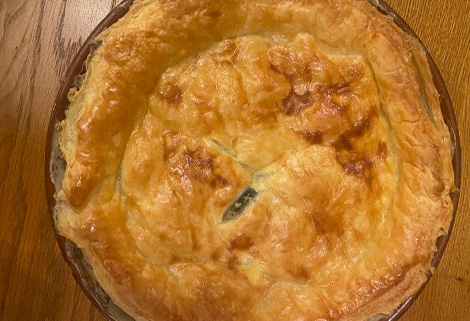
CABBAGE, BEANS AND FISH
Cabbage, white beans and fish also make a tasty one pot meal. Use a similar method to start off with onion, bacon, carrots, garlic and herbs. Add the shredded cabbage (savoy is best) and pour in about 4 tbsp white wine and ½ pint stock. Season well and simmer gently until almost cooked then stir in a tin of white beans such as flagelot or cannellini.
Dust the white fish of your choice with seasoned flour and pan fry, skin side down first for about 4 mins then flip over for a minute and place skin side up on top of the cabbage pot, lid on and finish on a very low simmer to steam the fish through until cooked.
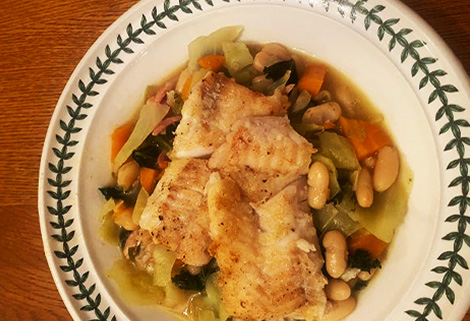
BACON, POTATO AND ONION BAKE
5 rashers of British bacon, rind removed and roughly diced.
750g potatoes, peeled and thinly sliced
1 -2 onions (depending on size) thinly sliced
3 garlic cloves, thinly sliced
2 tsp mixed herbs
1 litre vegetable or chicken stock
1 – 2 slices (depending on size) wholemeal bread made into breadcrumbs
Savoy cabbage, finely shredded and steamed or boiled to serve.
Preheat the oven to 180 fan. Gently fry the bacon in 2 tbsp olive oil until starts to crisp. Meanwhile bring the stock to the boil in a large pan and add the potatoes, onion and garlic, push down to submerge, lid on, simmer for 5 mins. Drain reserving the stock. Layer the potatoes and onion in a shallow casserole dish adding the bacon bits, 1 tsp of the herbs and fresh ground black pepper to each layer as you go. Pour over about 300ml of the reserved stock. Mix the breadcrumbs with the remaining herbs and 1 tbsp olive oil and scatter over the top. Cover loosely with foil and bake in the oven for 40 mins, removing the foil halfway through cooking to crisp up the topping.
Serve with the tender savoy cabbage.
KERALAN VEGETABLES
Finally, most of us have a love of curries. We have done a bit of travelling in India over the years and the last trip was Kerala. We first got the idea of visiting this Southern part of India after visiting a wonderful Keralan restaurant when we were moored in Newark on the river Trent. Here’s a Keralan recipe which is more of a stew than a curry!
1 tbsp oil
Spice ingredients
2 star anise
2 cloves
2 bay leaf
1” piece of cinnamon stick
1” piece of fresh ginger
8 – 10 curry leaves (available in dried spices in the supermarkets)
2 small green chillies
Vegetable ingredients
2 shallots or 1 small onion
1/2 carrot
1/2 cauliflower
2 – 3 green beans
Small handful green peas
2 cans thick coconut milk
½ tsp fresh black pepper
Pinch salt to taste
Chop all the vegetables and blanch in boiling water. Keep in cold water until ready to add to the pan.
Heat the oil in a heavy pan and all the spice ingredients and onion until soft and golden, take care not to burn the spices. Drain the vegetables and add to the pan along with the salt and pepper. Add the coconut milk and mix everything together. Cover and cook on a very low simmer with the lid on, or in the oven for about ten minutes.

I hope you’ve enjoyed reading my Autumn article, please feel free to email me if you have any questions or take a look at my “canal cuisine” page on Facebook. In the meantime we are working together to bring you more recipes through CanalsOnline Magazine.
